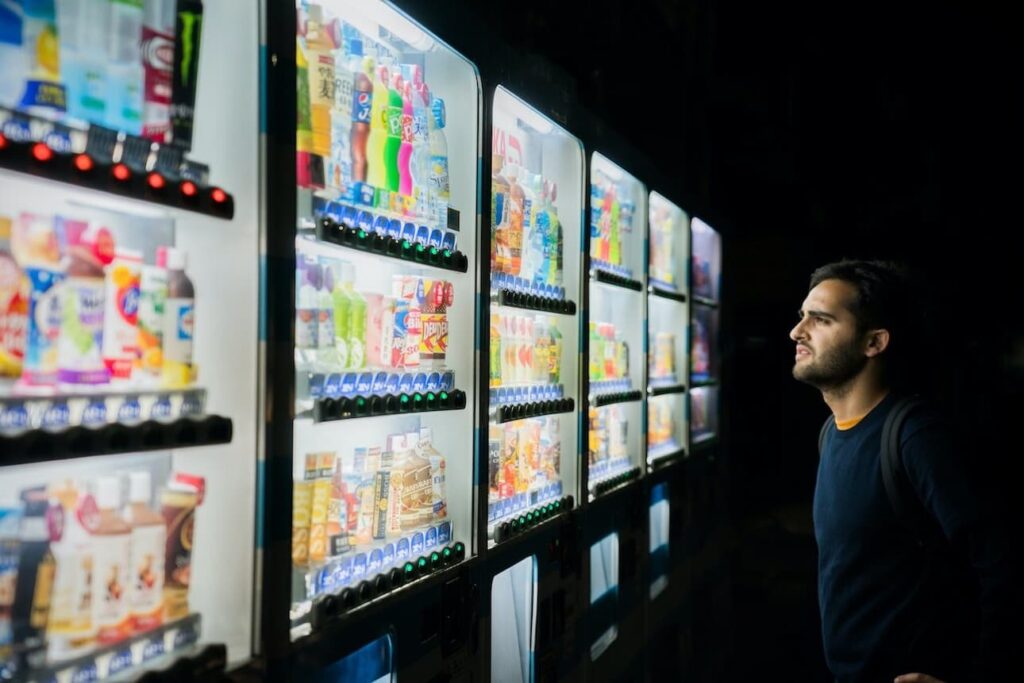Do you ever wonder why certain foods taste better than others? Or why some perfumes are more appealing? Sensory testing holds the key to unlocking these mysteries.
For consumer brands, developing products that delight customers is essential for success. However, relying solely on internal opinions and assumptions often misses the mark. Consumers today have higher expectations and more choices than ever before, so if your product falls short in areas like taste, aroma, texture, or appearance, they'll simply move on to a competitor.
The solution? Incorporating sensory testing as a core part of your product development and product marketing process. Sensory analysis gives brands an objective way to understand what real consumers think.
This comprehensive guide covers everything you need to know about sensory testing methods, best practices, the rise of consumer-based testing, and why it should be a priority for any brand. Stay tuned.
Peekage solutions: Product testing services
What is Sensory Testing?
Sensory testing is the process of evaluating products using human senses like taste, smell, and touch to improve quality and consumer satisfaction.
Sensory testing, also known as sensory evaluation or sensory analysis, is the scientific process of measuring and analyzing human responses to the composition of food and other products as perceived by the senses of sight, smell, taste, touch, and hearing. It's a crucial step in product development, quality control, and marketing for consumer brands across industries like food, beverages, personal care, and more.
Understanding the psychology and physiology behind sensory perception is crucial for brands aiming to create products that resonate with consumers. Our senses play a significant role in shaping our preferences and behaviors, influencing everything from the foods we enjoy to the products we purchase.
At its core, sensory testing helps brands understand how consumers perceive their products and what factors influence acceptance or rejection. This feedback is invaluable for refining formulas, flavors, packaging design, and overall product experience.
Studies show that 66% of consumers switch brands due to poor product quality or performance.

Why is Sensory Testing Important for Consumer Brands?
In today's crowded marketplace, standing out with a product that truly resonates with your target consumers is more important than ever. Sensory testing provides objective consumer insights that can give your brand a competitive edge. Here are some key benefits:
1. Optimize Product Formulations
Sensory tests like discrimination tests (e.g. triangle tests) and descriptive analysis can pinpoint specific sensory attributes that need adjustment, like taste, aroma, texture, or appearance. This data guides product developers in fine-tuning formulas to align with consumer preferences.
2. Validate Quality and Consistency
For existing products, sensory evaluation methods like scoring tests (e.g. 9-point hedonic scale) can monitor quality over time or across different production batches and locations. This ensures brands maintain consistent sensory profiles that meet consumer expectations.
3. Support Marketing Claims
Objective sensory data from consumer tests like preference ranking can substantiate marketing claims about product qualities like "creamier texture" or "bolder flavor." This adds credibility to your messaging.
4. Identify Market Opportunities
Sensory mapping tests can reveal unmet consumer needs or white space opportunities in a particular product category based on how consumers perceive and describe different products.
5. Demand Forecasting
Sensory testing for demand forecasting can provide valuable insights to help brands better predict consumer demand before launching new or reformulated products. According to a study cited on Statista, over 30% of new consumer packaged goods products fail within the first year due to insufficient demand.
Effective sensory testing and analysis of consumer preferences can minimize this risk by accurately forecasting demand and tailoring production volumes accordingly.
"As mentioned, sensory marketing is a powerful tool for creating memorable brand experiences and deeper consumer connections. By leveraging sensory cues like packaging design, scent, and sound, brands can evoke resonant emotions and associations. This multisensory approach imprints the brand in consumers' minds, fostering stronger recall, loyalty, and purchase influence.
Common Sensory Testing Methods
Sensory evaluation is a crucial aspect of product development and quality control in the food, beverage, and consumer goods industries. Various testing methods are employed to assess the sensory properties of products and gather valuable consumer insights. The following are some commonly employed sensory testing methods:
- Discrimination Testing: Identifies product differences.
- Descriptive Testing: Details sensory characteristics.
- Consumer Testing: Captures preferences and perceptions.
Discrimination Tests
These tests aim to determine if a perceptible difference exists between samples. Common discrimination tests include:
- Triangle Test: Participants receive three coded samples, two of which are identical, and must identify the odd or different sample.
- Duo-Trio Test: Participants are presented with a reference sample and two coded samples, one of which matches the reference. They must identify the matching sample.
- Same-Different Test: Participants simply indicate whether two samples are the same or different.
- Paired Preference Test: Participants are presented with two coded samples and asked to indicate their preference or if they have no preference.
Discrimination tests are particularly useful for quality control purposes, such as detecting batch-to-batch variations, shelf-life changes, or the effects of ingredient or formula modifications.
Descriptive Testing
This method involves a trained panel of experts who evaluate and quantify the intensities of various sensory attributes (e.g., appearance, aroma, flavor, texture) present in a product. Descriptive analysis provides detailed sensory profiles or "fingerprints" of products, allowing for comprehensive comparisons and identifying key sensory drivers. Common techniques include:
- Quantitative Descriptive Analysis (QDA): Panelists rate the intensities of specific attributes on a structured scale.
- Spectrum Method: Panelists rate the intensities of specific attributes relative to reference standards.
- Free Choice Profiling: Panelists use their own vocabulary to describe and rate sensory attributes.
These "difference" tests are useful for quality control and detecting minute formula changes.
Consumer Testing:Â
These tests measure consumer acceptance, preference, and the drivers of liking for products. Common effective testing methods include:
- Hedonic Scaling: Consumers rate their overall liking or specific sensory aspects (e.g., aroma, texture, flavor) on a scale, typically ranging from "Dislike Extremely" to "Like Extremely."
- Preference Ranking: Consumers rank samples in order of preference.
- Just-About-Right (JAR) Scales: Consumers rate the intensity or appropriateness of specific attributes (e.g., sweetness, saltiness) on a scale ranging from "Too Little" to "Too Much."
- Choice Tests: Consumers indicate their preferred sample(s) from a set of options.
- Acceptance Tests: Consumers rate their overall acceptance or likelihood of purchasing a product.
Affective tests provide valuable insights into consumer preferences, acceptance, and potential market success, guiding product development and optimization efforts.
Additionally, several advanced sensory techniques, such as temporal methods (e.g., Time-Intensity evaluation) and multi-sensory approaches (e.g., coupling sensory data with instrumental or physiological measurements), are also employed to gain a more comprehensive understanding of the sensory experience.
By combining these sensory testing methods, companies can gain a comprehensive understanding of their products' sensory characteristics, identify areas for improvement, and better meet consumer expectations, ultimately driving product success and customer satisfaction.
Around 70% of companies utilize sensory evaluation methods in New Product Development (NPD), with larger companies implementing them more frequently
Innovative Sensory Testing Methods
Advancements in technology have transformed the landscape of sensory testing, enabling brands to gather more precise and actionable insights than ever before. From virtual reality simulations to biometric sensors, these innovations offer new possibilities for understanding and optimizing the sensory experience of products.
Here are some of the groundbreaking innovations shaping the future of sensory testing:
- Biometrics and Emotional Response Analysis:
Advancements in biometric technology have enabled researchers to quantify emotional responses and physiological reactions to sensory stimuli. Techniques such as facial expression analysis, eye-tracking, and galvanic skin response (GSR) measurements can reveal subconscious emotional responses and arousal levels, offering invaluable insights into the emotional drivers of consumer preferences.
- Virtual and Simulated Product Experiences:
Virtual reality (VR) and simulated environments are revolutionizing sensory testing by creating highly realistic and immersive product experiences. Participants can virtually interact with products, visualizing them in different contexts or environments, and provide feedback on their sensory perceptions, potentially reducing the need for physical prototypes or samples.
- Augmented Reality Sensory Testing:
Augmented reality (AR) technology overlays digital information onto the real world, enabling researchers to enhance sensory testing experiences. For instance, AR can be used to virtually modify product attributes, such as color, texture, or packaging design, allowing participants to evaluate different iterations without the need for physical samples.
- Neuromarketing and Brain Imaging:
Neuromarketing techniques, such as functional magnetic resonance imaging (fMRI) and electroencephalography (EEG), offer unprecedented insights into the neural responses and cognitive processes associated with sensory experiences.
By monitoring brain activity, researchers can identify the specific brain regions activated by different sensory stimuli, providing a deeper understanding of the neurological underpinnings of consumer preferences and decision-making processes.
- Multi-Sensory Integration:
Recognizing the interconnected nature of our senses, researchers are exploring multi-sensory approaches that combine sensory inputs from multiple modalities (e.g., sight, sound, smell, taste, and touch). These techniques aim to replicate the holistic sensory experience consumers encounter with products, enabling a more comprehensive evaluation and optimization of the overall sensory experience.
How to Conduct Effective Sensory Tests
While sensory testing can yield valuable insights, it's essential to approach the process thoughtfully and strategically. Key considerations such as sample size, test environment, and control factors can significantly impact the validity and reliability of test results. By adhering to best practices and leveraging the right methodologies, brands can ensure that their sensory testing efforts yield meaningful and actionable insights.
For brands looking to incorporate sensory testing into their research toolkit, here are some best practices:
1. Set Clear Objectives
Define the specific goals and questions you want the sensory test to answer. This will determine the most appropriate testing method(s).
2. Use a Controlled Environment
Sensory booths or a controlled sensory lab help eliminate external aromas, noise, visuals, etc. that could bias results. Environmental conditions like temperature and lighting should also be standardized.
3. Properly Prepare Samples
Ensure that samples are appropriately coded (e.g., using 3-digit blinding codes) to eliminate any perception bias. Maintain consistency in serving orders and instructions across all panels.
4. Select the Right Panel
For analytical tests, you'll need a trained descriptive panel with "calibrated" senses. For consumer tests, you'll want a representative sample of your target market with no prior training.
5. Provide Clear Instructions
Give panelists detailed procedures and definitions to ensure everyone interprets scales and attributes consistently.
6. Analyze and Interpret Results
Statistical analysis techniques like ANOVA, multivariate methods, and preference mapping can extract meaningful patterns and relationships from the sensory data.

Ethical Considerations in Sensory Testing
While sensory testing offers valuable insights into consumer preferences, it's essential for brands to prioritize ethical considerations throughout the process. Key ethical principles include:
- Autonomy: Obtaining voluntary, informed consent from all participants after clearly explaining the study's purpose, procedures, risks/ benefits, and confidentiality measures.
- Beneficence: Maximizing benefits and minimizing potential physical, psychological, or emotional risks to participants. Accommodating dietary restrictions and disclosing allergens/ objectionable ingredients.
- Justice: Ensuring equitable selection of a diverse, representative participant panel without discrimination. Providing appropriate compensation.
- Privacy: Maintaining robust data security, anonymization, and confidentiality aligned with data protection regulations.
Ethical review boards can provide independent oversight to ensure testing protocols, consumer communications, and consent procedures meet ethical and legal standards.
Upholding these ethical principles demonstrates brands' integrity, builds consumer trust, and promotes social responsibility in sensory evaluation.
The Rise of Consumer-Based Sensory Testing
Traditionally, sensory testing was conducted in specialized facilities with trained expert panels. However, advancements in product testing platforms like Peekage are making it easier and more cost-effective for brands to tap into consumer-based sensory insights at home.
By shipping products directly to targeted consumer households for in-home product testing, brands gain realistic sensory feedback from their actual customers in natural environments. This addresses some limitations of lab-based tests:
- Eliminates artificial testing constraints
- Explores diverse cooking methods and preparations
- Captures feedback from non-experts and niche audiences
- Enables longitudinal or repeated exposure tests
When combined with mobile apps or online surveys, consumer-based sensory tests can be highly scalable while still maintaining rigorous methodological standards.
Conclusion
Sensory testing gives consumer brands a structured way to optimize product formulas, validate quality, support marketing claims, and identify new opportunities - all based on direct consumer feedback. While expert panels are still important, the future of sensory analysis is moving towards decentralized consumer testing enabled by product sampling platforms.
By making sensory testing a core part of your consumer research strategy, you can gain a deeper understanding of how real people perceive your products through their five senses. This first-hand knowledge is powerful for driving innovation and creating products that truly delight your target consumers.
FAQs
1. What is sensation testing?
Sensation testing is a method to assess an individual's perception of sensory stimuli, such as touch, temperature, or pain, to evaluate sensory function and detect abnormalities.
2. What are the three types of commonly used sensory testing?
Sensory evaluation typically involves:
a. Difference tests: Identifying variations between products.
b. Affective (consumer) tests: Gauging consumer preferences and reactions.
c. Descriptive analysis: Utilizing trained panels to characterize sensory attributes.
Setting up tests carefully minimizes errors and biases.
3. How to test sensory function?
To test sensory function, use methods like threshold testing to determine minimum perception levels, discrimination testing to differentiate stimuli, and pain testing to evaluate tolerance. Ensure standardized procedures to minimize bias and interpret results for clinical or research purposes.
4. What are examples of sensory testing?
Examples of sensory testing include taste tests for food and beverages, aroma evaluations for perfumes or candles, tactile assessments for fabrics or materials, and visual inspections for product appearance or color.
5. What are the different types of sensation tests?
The different types of sensation tests include taste tests (gustation), smell tests (olfaction), touch tests (tactile sensation), sight tests (visual perception), and hearing tests (auditory perception).
References
- 11 Reasons New Products Fail, User Voice,
https://www.uservoice.com/blog/why-products-fail - Sensory Analysis and Consumer Research in New Product Development, National Library of Medicine,
https://www.ncbi.nlm.nih.gov/pmc/articles/PMC8001375/ - Monitoring calibration of descriptive sensory panels using distance from target measurements, Science Direct,
https://www.sciencedirect.com/science/article/abs/pii/S0950329305000352 - Choosing an appropriate Sensory data analysis tool, SciSpace,
https://typeset.io/questions/how-to-analyze-the-sensory-analysis-results-32zs1bjxa1 - Quantitative Sensory Testing (QST), Physiopedia,
https://www.physio-pedia.com/Quantitative_Sensory_Testing_(QST)




